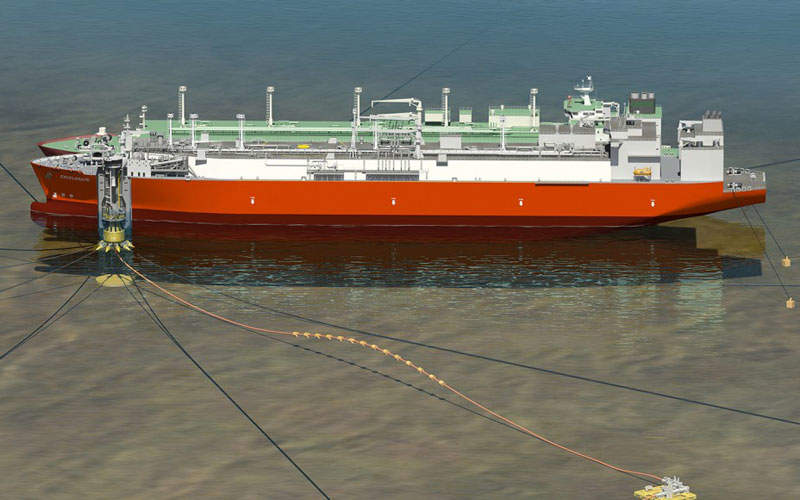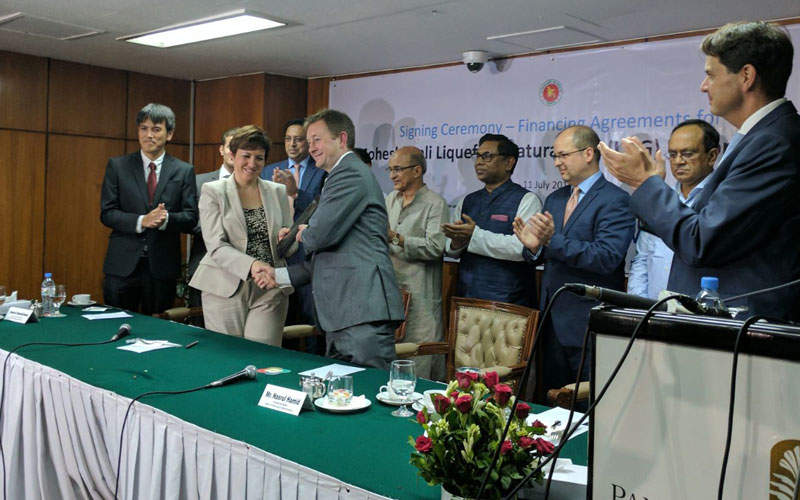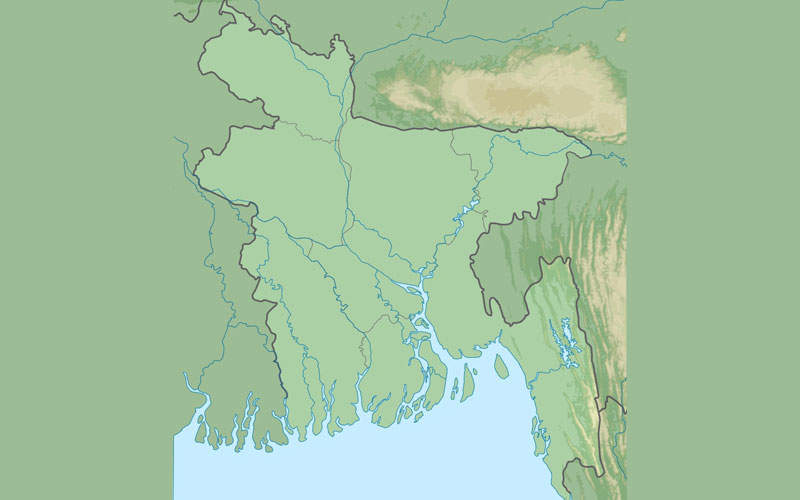
Moheshkhali floating liquefied natural gas (LNG) terminal is being developed offshore the Moheshkhali Island in the Bay of Bengal, Bangladesh.
It will be the country’s first LNG import terminal and is expected to help secure the future provision of energy in the country.
The terminal will cost an estimated $179.5m and feature a base-load capacity of 500 million standard cubic feet of gas a day (MMscf/d).
The project will be jointly developed by Excelerate Energy and Petrobangla on a build, own and operate basis.
Construction on the project is scheduled to commence in the final quarter of 2017 and be completed by mid-2018.
Moheshkhali floating LNG terminal purpose
Bangladesh is heavily dependent on natural gas to its energy requirements due to limited hydro and wind resources, as well as a lack of available land for the development of solar projects.
The country has been experiencing severe shortage of energy resources for many years, with demand exceeding five billion cubic metres a year. These shortages are having a noticeable effect on its energy, water and transport sectors.
Additionally, the existing natural gas reserves are forecast to exhaust by 2031, despite being estimated to comprise more than 15 trillion cubic feet.
Bangladesh is expected to face an energy crisis should no new fields be discovered by that period.
Petrobangla proposed the construction of the new terminal to address this shortage and enable the importation of natural gas into the country.
The proposal was initially made in 2010, though finding a company willing to implement the project took approximately six years.
Details of Bangladesh’s first LNG import terminal
Moheshkhali floating LNG terminal will include a floating storage and regasification unit (FSRU), a subsea buoy system and a subsea pipeline, which will connect the terminal to an onshore pipeline system.
The FSRU will have a storage capacity of 138,000m³ of LNG and a regasification capacity of 500Mscf/d.
The terminal’s offshore subsea buoy system will be used for mooring and will also serve as a conduit to transfer natural gas onshore.
All the necessary geotechnical and geophysical studies for the terminal’s construction have been completed and confirmed the site’s viability.
Financing for the Moheshkhali terminal
International Finance Corporation (IFC) is acting as the lead arranger for the project’s financing, which was closed in July 2017.
The organisation arranged a debt financing package of $125.7m, including a $32.8m loan from its own account.
The remaining loan is being provided by a group of banks including CDC Group, Development Bank of Germany (DEG), Japan International Cooperation Agency (JICA) and the Dutch-led Entrepreneurial Development Bank (FMO).
Excelerate Energy and IFC had previously signed an equity agreement for the project.
IFC has contributed approximately $10.8m in equity under the agreement, while Excelerate contributed a total of $43.1m.
Contractors involved
Excelerate Energy has been awarded the engineering, procurement and construction (EPC) contract on a build, own and operate basis.
The company will manage the terminal for 15 years, with Petrobangla taking ownership after this period.
The EPC contract includes the provision of FSRU technology, port service vessels and facility management services.
Excelerate Energy contracted MacGregor to supply the mooring and gas transfer system for the FSRU.
Svitzer has been subcontracted by Excelerate Energy for a 15-year period to provide marine support services.
The company will use five vessels for the project, including three under-construction Robert Allen RAstar 3200 Ocean Going Terminal tugs, one 36m Crew Boat and the MSV Svitzer Foxtrot.
Benefits of Moheshkhali LNG terminal
The new terminal will enable Petrobangla to import LNG from international gas markets and increase natural gas supply in Bangladesh by approximately 20%.
It will also diversify Bangladesh’s sources of natural gas and provide the country with access to clean energy.
Additionally, the development is expected to provide sufficient natural gas to support power generation of up to 3,000MW, which is essential to promote power reliability, industrial development and the creation of jobs in the country.






